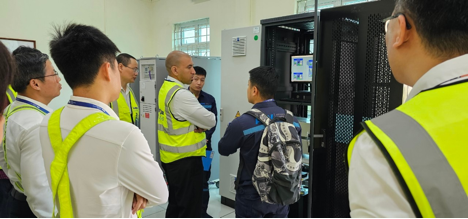
The Civil Aviation Authority of Vietnam has just announced that the team of the International Civil Aviation Organization's Universal Safety Oversight Audit Program (USOAP) has finished its comprehensive assessment of the safety assurance capability of the Vietnamese aviation industry in 2024.
The USOAP Global Safety Oversight Audit Program focuses on a state’s capability to provide safety oversight by assessing whether the state has implemented the critical elements (CEs) of a safety oversight system effectively and consistently.
This audit covers 08 key areas including legal system (LEG), organizational structure (ORG), personnel licensing (PEL), aircraft operation (OPS), aircraft airworthiness (AIR), accident investigation (AIG), air navigation services (ANS), aerodromes and ground aids (AGA) by assessment means of a new system of Protocol Questions (PQs).
According to the preliminary assessment results released by the ICAO's Aviation Safety Audit Mission, the Effective Implementation (EI) score in the safety assurance of the Vietnamese aviation industry reached 77.1 percent, an increase of 11.54 percent compared to the assessment results in 2016.
Moreover, Aerodromes and Ground Aids (AGA)) score achieved 83.85 percent, an increase of 28.9 percent compared to the assessment results in 2016.
With this result, Vietnam has been included in the group of countries with an Effective Implementation score in safety assurance higher than the average of the Asia-Pacific region (65.31 percent) and the world average (68.81 percent).
Furthermore, the EI score of Vietnam's Field Operations Section's performance is 23.12 percent higher than the average of Asia-Pacific countries and 23.85 percent higher than the average of countries around the world.
To achieve this result, the Civil Aviation Authority of Vietnam and the Vietnam Airports Corporation (ACV) have made many efforts to overcome the problems pointed out in the assessment results in 2016.
Specifically, an aircraft model for practical fire rescue training according to ICAO standards has been built.
At the same time, ACV has invited foreign organizations to train in practical firefighting for aircraft, develop firefighting plans for aircraft in areas with complex terrain, and invest in rescue equipment to move immobile aircraft while improving the effectiveness of maintenance and maintenance of aviation infrastructure and upgrade equipment to ensure aviation safety.
In the coming time, ACV will continue to closely coordinate with the Civil Aviation Authority of Vietnam and units in the industry to address the unfinished contents which were pointed out in the recent assessment to fully meet the standards and recommended practices of ICAO.
Sai Gon Giai Phong